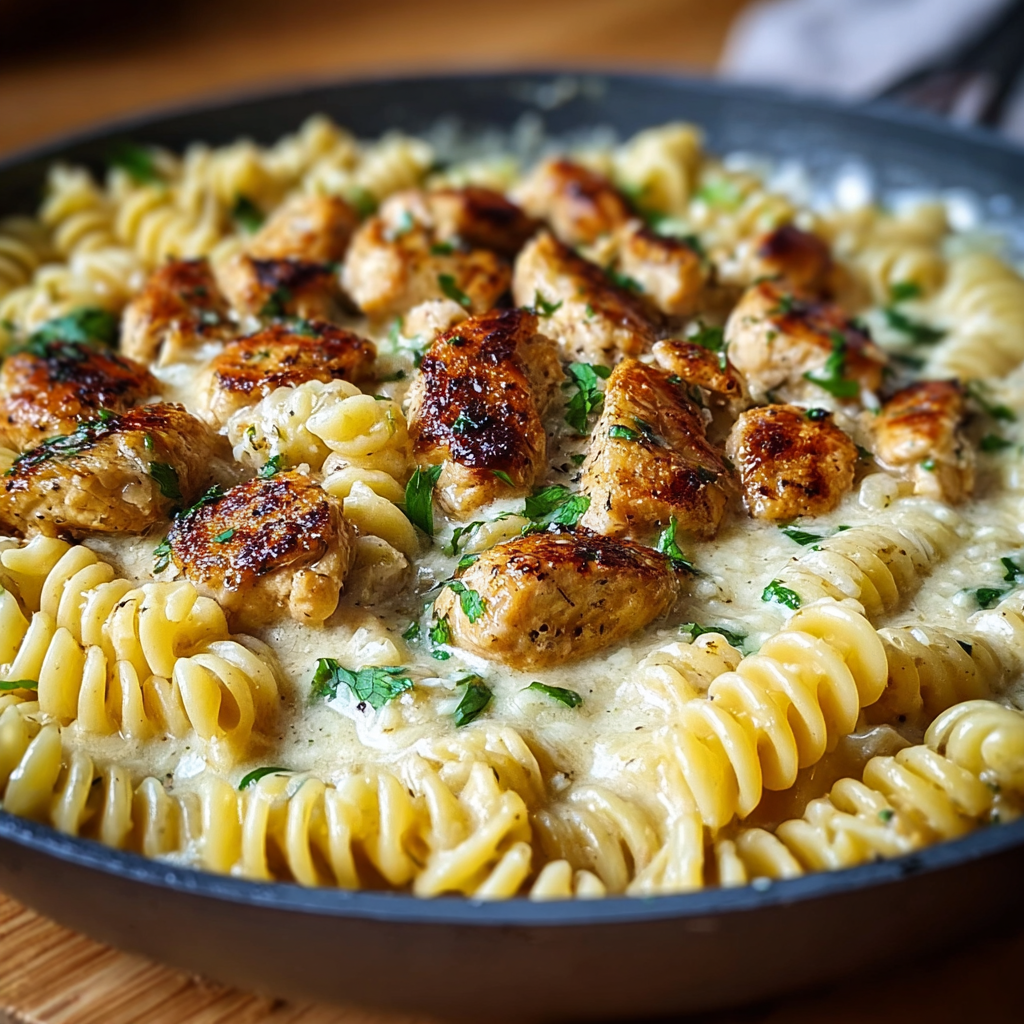Homemade French Croissants

Buttery, flaky croissants made at home using classic lamination—step-by-step guidance for tender interior and crisp golden layers.

This recipe for classic French croissants has been my weekend ritual for years. I discovered the transformative power of proper lamination on a rainy Saturday morning while experimenting with butter-to-dough ratios; the first batch emerged with a glossy, crackling crust and a tender, honeycomb-like crumb that made everyone in the house pause. Croissants are the kind of bake that rewards patience: time in the fridge, cool hands, and respect for the butter block produce dozens of delicate layers that shatter and melt on the tongue. The flavor is rich but not heavy—a balance of butter, a touch of sugar, and that faintly tangy smell from the proofing dough.
What makes this technique special is the combination of disciplined folding and simple ingredients: flour, yeast, milk, butter, and a little sugar and salt. I learned to watch visual cues—a glossy seam after rolling, a slight stretch as you shape the crescent, and a golden sheen after the egg wash—more than any strict timing. Over the years this method has become my go-to for breakfast gatherings, lazy brunches, and the sort of cozy mornings where the house smells like warm bakery. Even picky kids are convinced they were bought at a patisserie the first time I served them fresh from the oven.
Why You'll Love This Recipe
- Produces reliably flaky, laminated pastries using everyday pantry ingredients—no specialized flour required, and the final result tastes like a professional bake.
- Flexible schedule: active hands-on time is modest, and long chilling windows let you break work across two days for easier planning.
- Scales well: this batch makes roughly a dozen croissants—perfect for a family brunch or freezing extras for quick reheats later.
- Clear visual cues and troubleshooting tips included so you know when the butter is the right texture and how to avoid leaks during lamination.
- Impresses guests: the glossy, deep-golden finish and audible flake on the crust make these a crowd-pleaser for special mornings.
- Uses common equipment—rolling pin and baking sheet—so you don’t need professional gear to get bakery-quality results.
In my kitchen, this recipe has become the measure for slow weekends. My partner once declared the second batch the best I'd made yet, and a friend who owns a small café asked for the method. Those little moments—someone breaking a croissant and exclaiming at the airy layers—are why I keep returning to this dough.
Ingredients
- All-purpose flour (4 cups): Use a high-quality brand like King Arthur or Gold Medal for consistent protein content; sift or whisk to remove lumps. Flour provides structure—too much will make the pastry tough, so measure by spooning into the cup and leveling.
- Granulated sugar (1/4 cup): Adds a subtle sweetness and helps with browning; regular white sugar works fine—do not substitute with coarse sugars that won’t dissolve evenly.
- Salt (1 tablespoon): Enhances flavor and tightens gluten; use fine sea salt or kosher salt measured by weight if possible to avoid over-salting.
- Active dry yeast (1 tablespoon): Bloom in warm milk (about 100–110°F) until foamy; fresh active yeast gives a predictable rise—instant yeast can be used but stir it directly into dry flour and reduce bloom time.
- Warm milk (1 1/4 cups): Use whole milk for best richness; temperature matters—too hot kills the yeast, too cold slows proofing.
- Unsalted butter, melted (2 tablespoons): Added to the dough for a tender crumb. Use unsalted so you can control seasoning in the dough.
- Butter block (1 cup cold unsalted butter): For lamination, choose a high-fat European-style butter if you can (e.g., Plugrá or Kerrygold) and shape it into a flat square between parchment paper—this is the beurrage that creates the layers.
- Egg wash (1 egg + 1 tablespoon milk): Whisk to a uniform glaze for a glossy, deeply colored crust. Egg wash also helps layers seal lightly and encourages even browning.
Before you begin, chill your butter block well and keep your dough slightly cool—temperature control is the most important factor for successful layering.
Instructions
Make the dough (détrempe): In a large bowl or stand mixer, whisk together 4 cups flour, 1/4 cup sugar, and 1 tablespoon salt. In a separate bowl, dissolve 1 tablespoon active dry yeast in 1 1/4 cups warm milk (100–110°F) and wait until it's foamy, 5–10 minutes. Add the milk-yeast mixture and 2 tablespoons melted unsalted butter to the dry ingredients and mix until the dough comes together; knead on medium speed or by hand for 3–5 minutes until smooth but slightly tacky. Avoid over-kneading—the dough should be elastic but not tight. Prepare the butter block (beurrage): Place 1 cup cold unsalted butter between two sheets of parchment and use a rolling pin to shape it into a square roughly 6 inches on a side and about 1/4 inch thick. If the butter softens too much, chill briefly until firm but pliable—too cold and it will crack, too warm and it will leak. Enclose the butter: Roll the chilled dough into a 12-inch square. Place the butter square diagonally in the center like a diamond. Fold the four corners of the dough over the butter so it is fully enclosed. Press seams gently to seal—avoid pressing out the butter entirely. First turn (letter fold): Roll the enclosed dough into a long rectangle about 8 by 20 inches. Fold the short end into the center and then fold the other short end over it (like a letter) to make three layers. Wrap in plastic and chill for 30 minutes to relax gluten and firm butter. Second and third turns: Repeat the rolling, folding into thirds, and chilling process two more times for a total of three turns. Aim for even pressure and keep the dough cold—if butter softens, chill for 10–15 minutes between turns. Each turn increases layers and flakiness. Shape the croissants: After the final rest, roll the dough into a large rectangle about 1/4 inch thick. Trim the edges to make straight sides and cut triangles with a base roughly 5 inches wide and height about 8 inches. Score a small slit in the center of the base, gently stretch each triangle, then roll from the wide end toward the tip to form a crescent shape. Proof: Place shaped croissants on a lined baking sheet, cover loosely with plastic or a damp towel, and let them rise at room temperature for 1.5 to 2 hours until noticeably puffy (not necessarily doubled). Cooler proofing overnight in the refrigerator is an option for deeper flavor. Bake: Preheat the oven to 400°F (200°C). Whisk 1 egg with 1 tablespoon milk and brush lightly over each croissant for a glossy finish. Bake for 18–22 minutes, rotating the pan halfway through to ensure even browning, until puffed and deep golden brown. Let cool on a wire rack for at least 10 minutes before serving.
You Must Know
- Temperature matters: keep your butter and dough cold; aim for a cool kitchen (65°F / 18°C if possible) to prevent butter leakage during turns.
- Freezing: shaped, unbaked croissants freeze well for up to 3 months—freeze on a tray, then transfer to a bag; bake from frozen adding a few extra minutes.
- Protein and texture: all-purpose flour gives a tender interior; for a slightly chewier croissant, substitute up to 1 cup of bread flour.
- High in fat: each pastry is rich—store leftovers in an airtight container at room temperature for one day or refrigerate up to 3 days and reheat in a 350°F oven for 5–7 minutes to refresh flake.
My favorite aspect is the transformation: a flat rectangle becomes an accordion of layers that sing when broken. Family gatherings often become silent as everyone inspects the crumb; once, at a holiday brunch, my aunt declared them the best she'd had outside Paris—proof that care and time pay off.
Storage Tips
Store baked croissants at room temperature in a paper bag for up to 24 hours to maintain exterior crispness; plastic will soften the crust. For longer storage, freeze completely cooled croissants in a single layer on a tray then transfer to a freezer bag for up to 3 months. To reheat, place on a baking sheet and warm in a 350°F oven for 5–8 minutes (from thawed) or 10–12 minutes from frozen—this refreshes the flake better than a microwave. Leftover unbaked shaped croissants can be frozen, then proofed briefly from frozen before baking.

Ingredient Substitutions
If you prefer a richer final product, swap 1/4 cup of the milk for heavy cream to add tenderness and flavor. For slightly flakier layers, use European-style butter with higher fat; if using salted butter, reduce added salt in the dough. Instant yeast can replace active dry—mix it with dry ingredients and proceed without blooming, though proofing times may shorten. For a whole-grain twist, replace up to 1 cup of all-purpose flour with whole-wheat pastry flour; expect a denser crumb and slightly nuttier flavor.
Serving Suggestions
Serve warm with unsalted butter and good-quality jam, or fill with ham and gruyère for savory brunches. Croissants pair beautifully with coffee or a lightly brewed tea; for celebratory mornings, slice and fill with pastry cream and fresh berries. A drizzle of honey or a dusting of powdered sugar elevates them for dessert. For a rustic platter, include a variety: plain, almond-filled, and ham-cheese variations to please different tastes.
Cultural Background
Though the crescent-shaped pastry is synonymous with French pâtisserie, croissants evolved from Austrian kipferl and were refined in France into laminated pastry in the 19th century. The technique of folding butter into dough—lamination—creates the laminated structure that defines croissants. Regional adaptations include the viennoiserie traditions across France and neighboring countries, where bakers adjust butter content, proofing, and shaping to create distinct local textures and flavors.
Seasonal Adaptations
In spring, fold in a light lemon curd or fresh strawberry preserves for brightness. Autumn invites savory variations with roasted squash and sage or apple and cinnamon for a pastry dessert. For winter holidays, brush with a sugar syrup after baking and top with slivered almonds or a thin chocolate drizzle. Technique remains the same—seasonal additions can be added after baking to preserve flake and texture.
Meal Prep Tips
Break the process across two days: prepare and laminate the dough on day one, then shape and proof on day two for fresh morning bakes. Keep a dedicated baking sheet lined and chilled so shaping is swift; portion triangles and freeze them unbaked for last-minute breakfasts. Label frozen trays with the date and bake directly from frozen with a slightly extended bake time. Use shallow, rigid containers to avoid squashing the layers during storage.
Making croissants at home is a delightful mix of method and patience. With practice you'll learn the feel of the dough and the perfect moment to fold and chill. Share them warm, and enjoy the little triumph of fresh-baked layers that rival your favorite bakery.
Pro Tips
Keep butter and dough cold between turns to prevent seepage and maintain distinct layers.
Use a bench scraper to trim straight edges—clean edges make evenly sized triangles and uniform baking.
Score a small slit in the base of each triangle before rolling to help the tip tuck and prevent unrolling during proofing.
Rotate the pan halfway through baking to ensure even browning and consistent rise.
This nourishing homemade french croissants recipe is sure to be a staple in your kitchen. Enjoy every moist, high protein slice — it is perfect for breakfast or as a wholesome snack any time.
FAQs about Recipes
What if the butter melts during laminating?
Chill the dough if butter softens during turns. If butter leaks, chill the dough and finally continue with colder turns.
Can I freeze unbaked croissants?
Yes—freeze shaped but unbaked croissants on a tray, then store in a bag. Bake from frozen adding a few extra minutes.
Tags
Homemade French Croissants
This Homemade French Croissants recipe makes perfectly juicy, tender, and flavorful steak every time! Serve with potatoes and a side salad for an unforgettable dinner in under 30 minutes.

Ingredients
Dough (détrempe)
Butter block (beurrage)
Egg wash
Instructions
Prepare the dough
Whisk flour, sugar, and salt. Bloom yeast in warm milk until foamy, then combine with melted butter and mix until a smooth, slightly tacky dough forms. Knead 3–5 minutes and chill briefly if warm.
Make the butter block
Shape cold butter between parchment into a 6-inch square using a rolling pin. Chill if it becomes too soft to handle; the block should be firm but pliable.
Enclose and perform turns
Roll dough to a 12-inch square, place butter diagonally, fold to enclose. Roll into an 8×20-inch rectangle and fold into thirds. Wrap and chill 30 minutes. Repeat two more times for three total turns.
Shape croissants
Roll final dough to 1/4-inch thickness, trim edges, and cut triangles about 5 inches at the base. Score and stretch each triangle slightly, then roll from base to tip to form crescents.
Proof and bake
Proof shaped croissants loosely covered for 1.5–2 hours until puffy. Preheat oven to 400°F, brush with egg wash, and bake 18–22 minutes until deep golden. Cool on a wire rack for at least 10 minutes.
Last Step: Please leave a rating and comment letting us know how you liked this recipe! This helps our business to thrive and continue providing free, high-quality recipes for you.
Nutrition
Did You Make This?
Leave a comment & rating below or tag
@snapyrecipe on social media!

Categories:
You might also like...

Creamy Garlic Butter Chicken & Rotini in Parmesan Sauce
Golden-browned chicken tossed with rotini in a silky garlic Parmesan sauce—comforting, quick, and perfect for weeknight dinners.

Southwest Chicken Wrap
A vibrant, smoky Southwest chicken wrap loaded with rice, beans, corn, and a creamy chipotle-lime sauce — perfect for lunch, meal prep, or an easy weeknight.

Classic Apple Crumble
A timeless apple crumble with a buttery, cinnamon-scented topping and tart-sweet Granny Smith filling — perfect warm with vanilla ice cream.

Did You Make This?
Leave a comment & rating below or tag @snapyrecipe on social media!
Rate This Recipe
Share This Recipe
Enjoyed this recipe? Share it with friends and family, and don't forget to leave a review!
Comments (1)
This recipe looks amazing! Can't wait to try it.
Comments are stored locally in your browser. Server comments are displayed alongside your local comments.
Hi, I'm Natalia!
What's Popular
Get My 30-Minute Meals email series!
Quick and easy dinner ideas delivered to your inbox.

